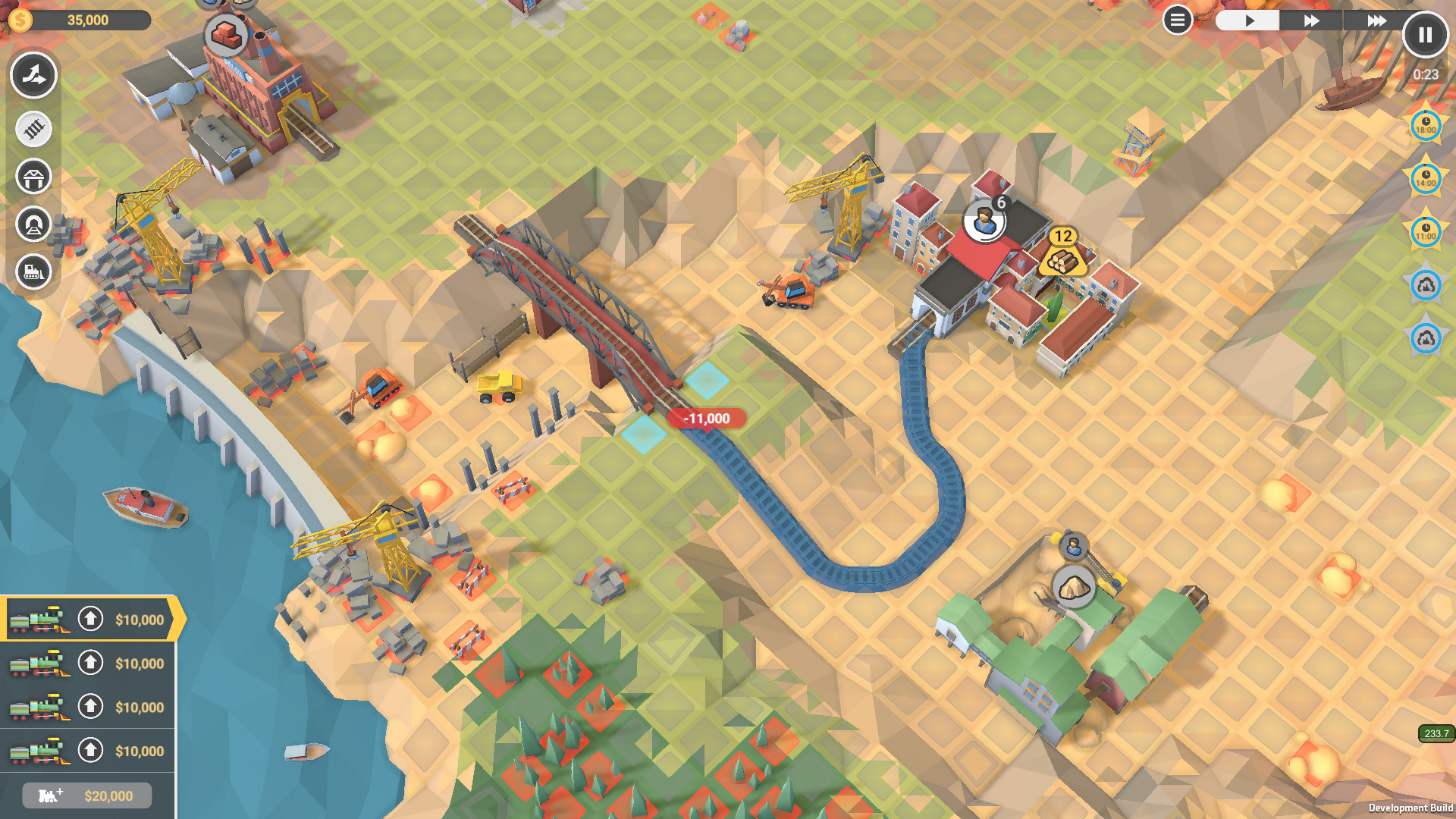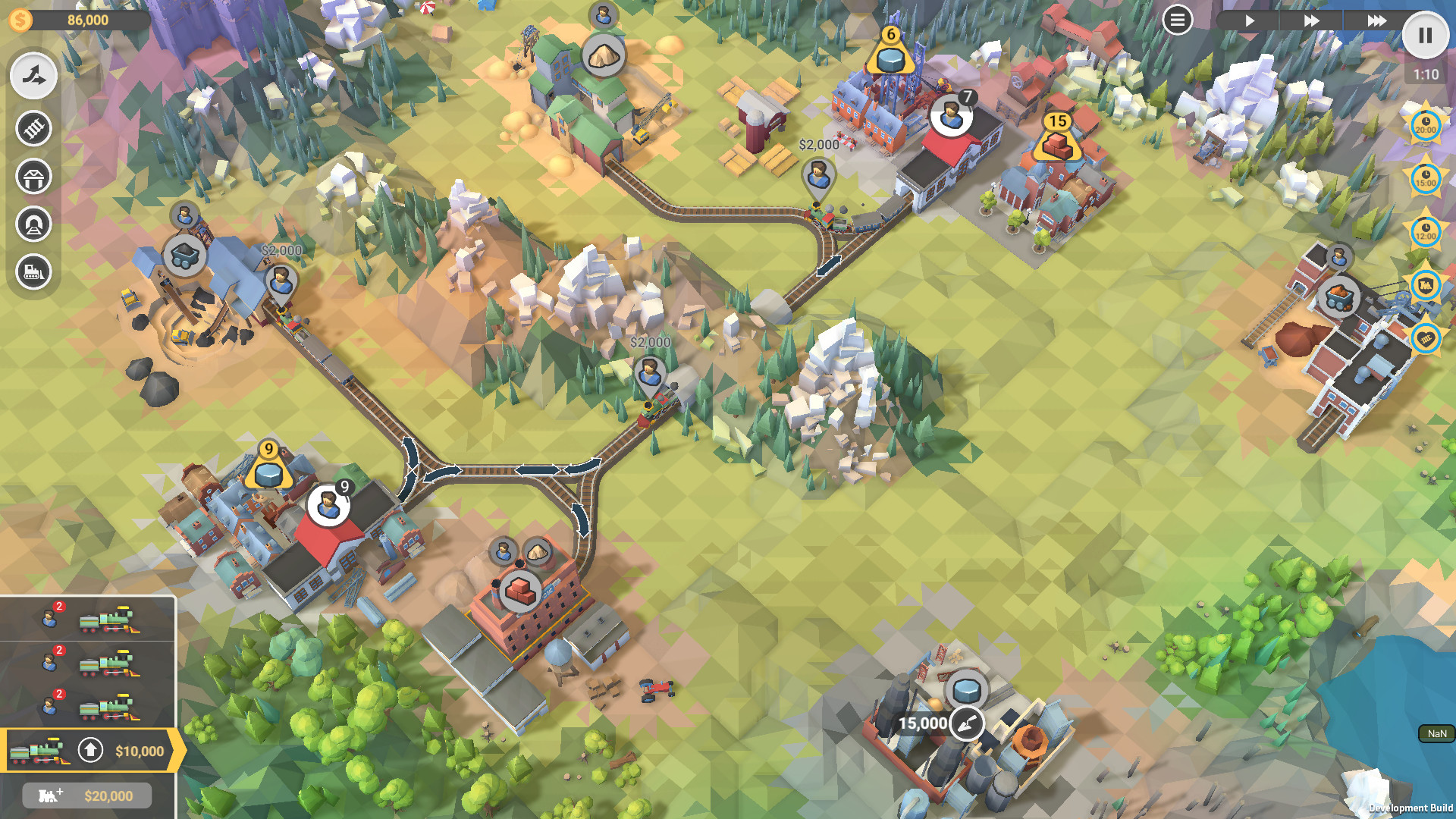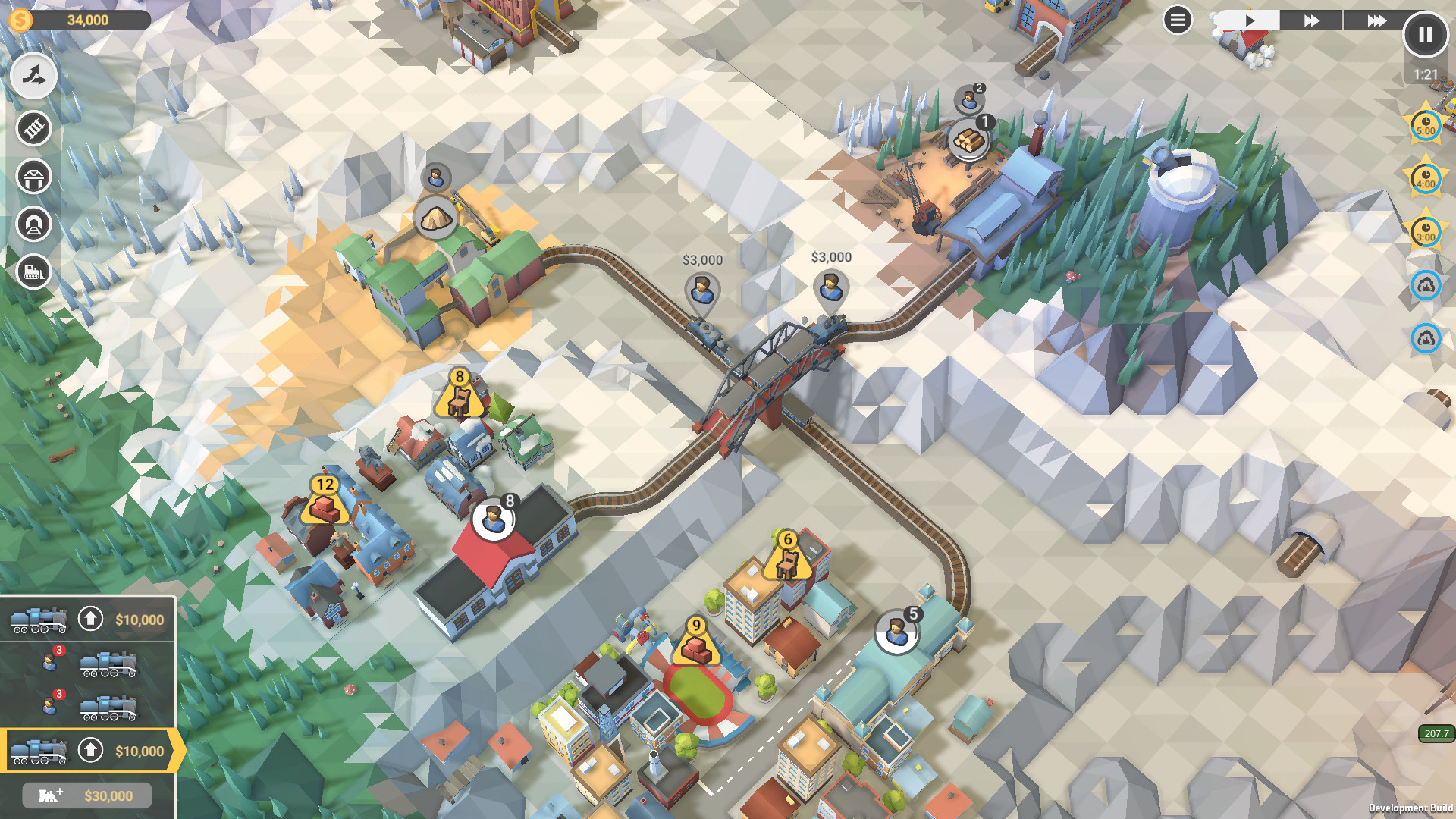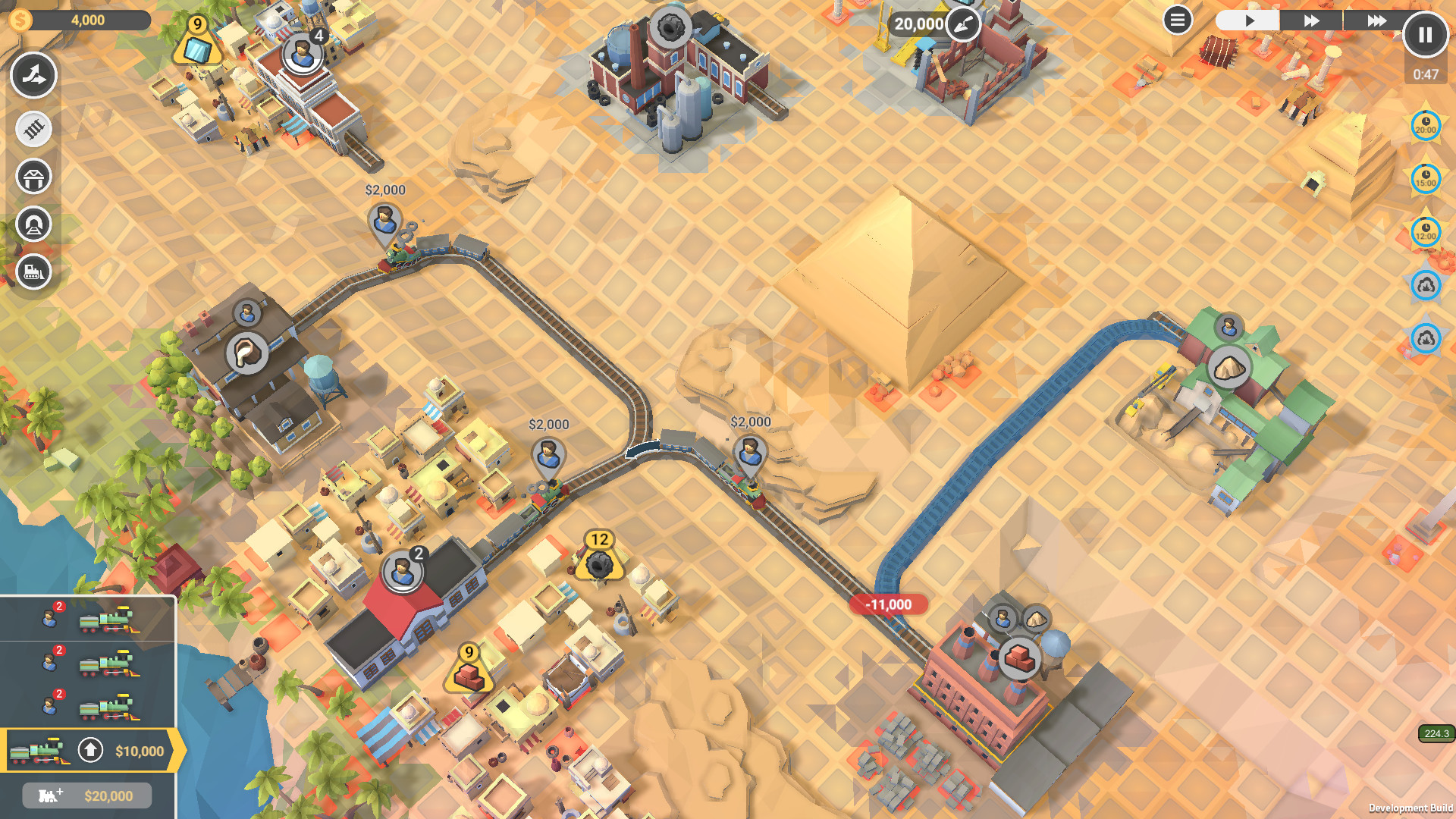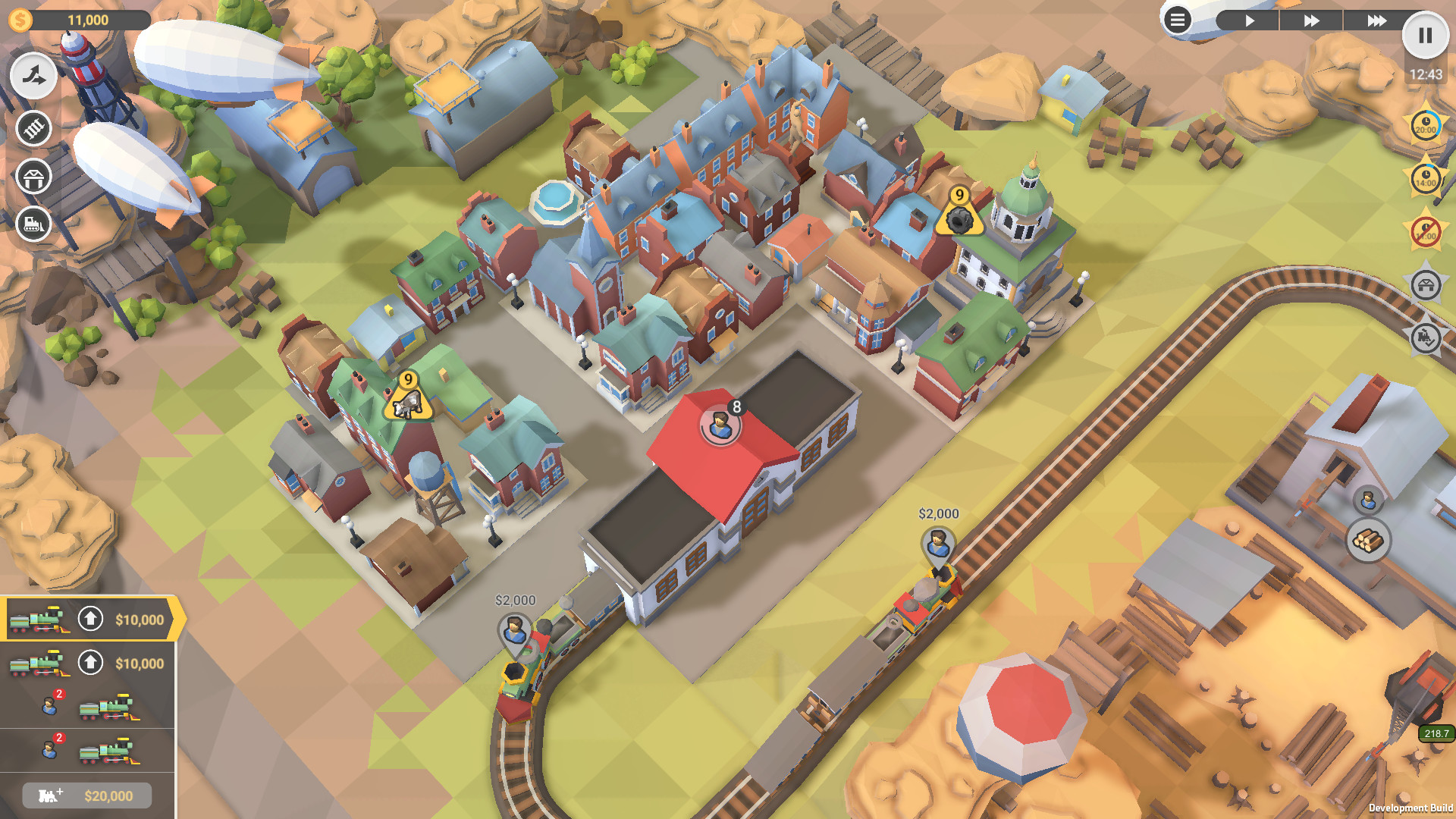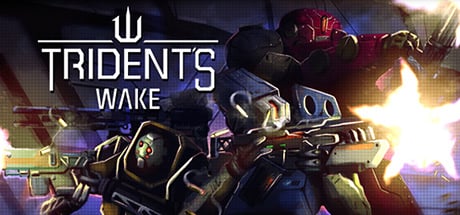
Enjoy engaging and addictive gameplay, combining puzzle micromanagement with tycoon elements.

Discover the history of railroads in elegant low-poly graphics!

Keep your trains running on schedule across 50 levels in Company Mode (*the Early Access version currently offers 20).

Upgrade your stock of locomotives and acquire advanced engines, with 18 models to unlock (*the Early Access version currently features 4).

Produce and ship increasingly sophisticated goods in more than 35 types of train cars (*the Early Access version currently offers 21).

Jump into our Level Editor with Steam Workshop integration and create your own Valleys - or play levels from other players!

Create your own mods with custom locomotives, train cars, industries, and resources from your favorite time or universe.
Greetings train lovers! Week after week weve been traveling through the history of locomotives in this series of historical posts, discovering the historical locomotives that inspired the engines that you can find in Train Valley 2. Time flies, and after reading more about the steam and diesel eras, were slowly approaching our present time. Today we arrive at the 80s and with them to a new generation of machines: electrical-powered locomotives.
Should we want to go fussy over it, technically speaking diesel locos were also electrical: the diesel engines produced electricity which, in turn, powered the traction motors. But when we talk about electric engines we meant engines 100% powered by electricity, which is cheaper, safer, quieter, more efficient, and more powerful than diesel But it has one major disadvantage: for obvious reasons, you cant run trains with batteries. Thus, the entire railway needs to be electrified which means that the cost of infrastructure is much higher than with diesel machines.
When you want a train to be electrical, you need overhead lines (or an electrified rail running parallel to the actual railways), but also control and security systems to keep the whole thing running without accidents. Thats incredibly expensive, and it cannot be done in stages you need to electrify the entire line before you can put any electrical trains in them. This means that for an electrified line to be profitable, or at least run on an acceptable deficit, it needs to have a consistently high traffic volume and even so, the investment in this infrastructure hardly ever shows in the short-term.
That also explains why there are still a lot of diesel trains running, especially in North America: electrifying a line is not just about economy or engineering, but also a political thing. In the US, for instance, railroad infrastructure is private, and private companies may lack the capacity (or the desire) of investing in electrification. On top of that, the US impose higher property taxes on privately owned rail facilities. In contrast to this, in pretty much the rest of the world railway networks are considered part of the key national infrastructures they are financed by the states, which do have the capacity and motivation for such grand undertakings, and train operators pay fees for using them.
Electric locomotives by themselves are not exactly a new invention: the first one known was built in 1837 and ran on batteries, but it couldnt run for more than 2.4 km before running out of energy. It managed, mind you, to haul up to six tons at a surprising speed (for then) of 6km/h. Funny enough, it was quickly destroyed by railway workers who feared for their jobs but that didnt stop engineers from keep working on new models of electric locomotives. Back then, in spite of all their problems and technical challenges, they had a major advantage over steam: they didnt produce smoke, which was a problem in tunnels and especially in urban areas, where coal exhaust was worsening the life of citizens. The first electrical tram opened in 1881 near Berlin; the first electrically-worked underground line started working in London in 1890. Thus, electric locomotives quickly became the standard for underground lines and tramways, easier and cheaper to electrify with the knowledge they had back then about electricity and its usage.
The first electrical locomotives were all DC (direct current), but that meant an important problem: DC electricity cant be transported over long distances without losing lots of energy, which made its usage out of urban areas impractical. In America, that made it somehow interesting for short sections (like mountain crossings) where coal or water was difficult to come by. That, along with the economical and political implications already mentioned, stalled the electrification of lines in America up to the point that many lines even were dismantled. In Europe, on the other hand, the development of these engines continued. The first technical challenge that needed to be overcome in order to electrify long-distance railway was creating AC locomotives. Italy saw the first 100 % electrical mainline, and after some experiments, prototypes, and inventions by engineers such as Charles Brown and Klmn Kand, by the 30s electrical locomotives were ready for its widespread implementation. AC locomotives were better for crossing the many mountainous regions of Europe both because of its superior traction in steeper lines and the inherent difficulties of supplying coal at these heights and distances. Also, hydroelectric power was readily available, making electricity cheaper and easier to come by than coal and diesel. After World War II, France decided that AC locomotives performed well enough to start implementing it across all its network, regardless of terrain, until it became the standard. Taking into account that France was administrating Germany in the immediate years after the war, and its importance in Europe and in the construction of the European Union, this decision was highly influential in making electrical locomotives the European standard.
Despite everything, such an undertaking is not exactly easy. The world was still in ruins in the post-war era; serious efforts at electrification didnt start until the 60s. But in the next decades, electric locomotives became faster and more efficient thanks to all sorts of innovations, from a better energy usage that allowed for much more speed to regenerative braking that recovered kinetic energy during braking. And just like that, we arrived at the 80s when the development of high-speed trains motivated countries such as Italy, Germany, France, Spain, and Japan to electrify more and more lines, even building high-speed electrical lines from scratch. This is what we consider the start of the Electric Era of Locomotives.
The ChS8 (The Disco)
The first locomotive from this time that we are going to discover is the ChS8, a Soviet locomotive engine designed and built by koda. Back then, the Czech manufacturer Skoda was still a state-owned Soviet company; the ChS8 was produced in Czechoslovakia but used mostly in Russia and Ukraine. It was an 8 axle locomotive, developed for pulling very long passenger trains at 100 km/h or faster. Thanks to this, it helped to mitigate a problem that affected the Soviet railway network since the end of the 70s: the increasing passenger traffic was in conflict with the need for high volume freight lines; since the strained Soviet economy could not afford new lines, the USSR needed existent trains to be more efficient by adding more cars. That, in turns, created the need for more powerful locomotives. (Photo from Wikipedia )
(Photo from Wikipedia )Here enters the ChS8, the most powerful AC passenger locomotive ever designed in the USSR which, because of the turns of history, was relatively short-lived. Three prototypes were built in 1983 and sent to Ukraine for tests and adjustments. 30 locomotives were built in 1987, 50 more in 1989 and then the USSR collapsed. In just a couple of years, the former Soviet republics had more urgent things to care about than trains. After the disintegration of the USSR, passenger turnover in Russia and Ukraine fell dramatically, so there was not a great need for such powerful locomotives. Some of them are still in service, although in the last decade the Russian railways are turning to more efficient locomotives like the EP10 and EP20.
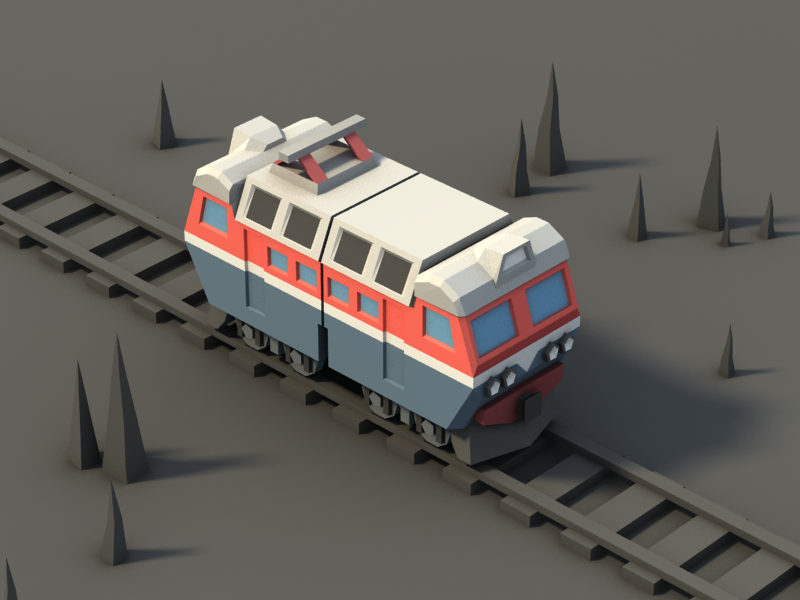
Here you have the in-game counterpart of the ChS8, with a similarly solid, strong, no-nonsense design. See also its two square-shaped frontal windows and its side windows, distributed in pairs except for the crews window and the last one. And check the roof for something you will in all this eras locomotives: the pantograph, the apparatus that collect power from the overhead line.
Todays post is a great example of the close relationship between the history of trains and History in general. The ChS8 is especially interesting for appearing in such an important critical moment for people, and how it affected its implementation, usage, and final fate.
We hope you enjoyed this story, see you next week! tv2conductor
Minimum Setup
- OS: Ubuntu 12.04+ or SteamOS+
- Processor: 2.2 GHz CPUMemory: 2 GB RAM
- Memory: 2 GB RAM
- Graphics: ATI Radeon HD 2400 or NVIDIA GeForce 7600
- Storage: 1 GB available space
Recommended Setup
- OS: Ubuntu 12.04+ or SteamOS+
- Processor: 2.2 GHz CPUMemory: 4 GB RAM
- Graphics: NVIDIA GeForce GTX1050 Ti or higher
- Storage: 1 GB available space
[ 6388 ]
[ 5570 ]
[ 2907 ]
[ 2497 ]
[ 1732 ]
[ 1040 ]
[ 32822 ]
[ 867 ]
[ 45577 ]

